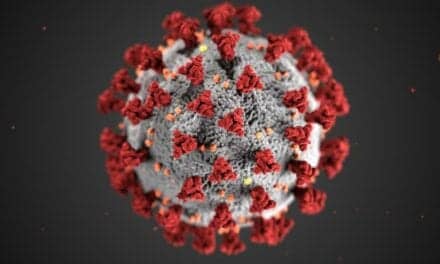Summary: Researchers developed a new DNA amplification method that offers a faster, more reliable, and cost-effective alternative to the Polymerase Chain Reaction (PCR) method for various medical and diagnostic applications.
Takeaways:
- AMPLON improves DNA amplification speed and accuracy, reducing amplification time by 50% compared to the traditional PCR method.
- This method operates under constant temperature conditions, eliminating the need for precise temperature control and making it more accessible for diverse settings.
- AMPLON’s portable and reliable approach has potential applications in infectious-disease diagnostics, personalized medicine, environmental monitoring, and field-based research.
A team of researchers from the Case Western Reserve University School of Medicine developed a new method for target DNA sequence amplification, testing, and analysis.
This new technique, or reaction, known as AMPLON (Amplifying DNA with Multiarm Priming and Looping Optimization of Nucleic Acid), offers an alternative to the previously accepted “gold-standard” Polymerase Chain Reaction (PCR) method, opening the opportunity for more applications in medical diagnosis.
The team’s findings were recently published in the journal Advanced Materials.
“AMPLON has the potential to positively change the way molecular analysis and clinical diagnostics are performed,” says Mohamed S. Draz, an assistant professor at the School of Medicine and the study’s principal investigator, “from infectious-disease diagnostics to personalized medicine and environmental monitoring.”
How AMPLON Works
Researchers use such technology to compare the DNA of sick cells to that of healthy cells, allowing them to better understand the changes that occur as a disease progresses and how to treat it.
AMPLON provides several extensions along the DNA strand to simultaneously increase the speed and accuracy of DNA synthesis under constant temperature conditions.
Using this new simplified process eliminates the need to operate between high and low temperature extremes that can cause stress on materials. It also makes the amplification process more structured and accessible, especially in settings where precise temperature control is challenging.
Improving Upon the PCR Method
Using the traditional PCR method, the DNA sample is heated so it can separate into two pieces of single-stranded DNA. Next, an enzyme builds two new strands of DNA, using the original strands as templates. The process is tedious, time consuming and expensive.
“We’ve developed a new method of DNA amplification that does not require bulky lab-bound equipment but can be conducted in one step and in diverse settings,” Draz says. “More significantly, our approach does not weaken enzymes like the PCR method.”
AMPLON’s multiarmed DNA primer design can turn the shortcomings of enzymes into strengths to improve amplification efficiency and produce consistent results.
“We’ve been able to enhance amplification and reduce amplification time by 50%,” Draz says. “Our approach has the potential to dramatically change the way nucleic acid amplification is performed, providing instead a portable, reliable and cost-effective solution for applications, ranging from point-of-care diagnostics to field-based research.”
Featured image: Mohamed S. Draz. Photo: Case Western Reserve University





